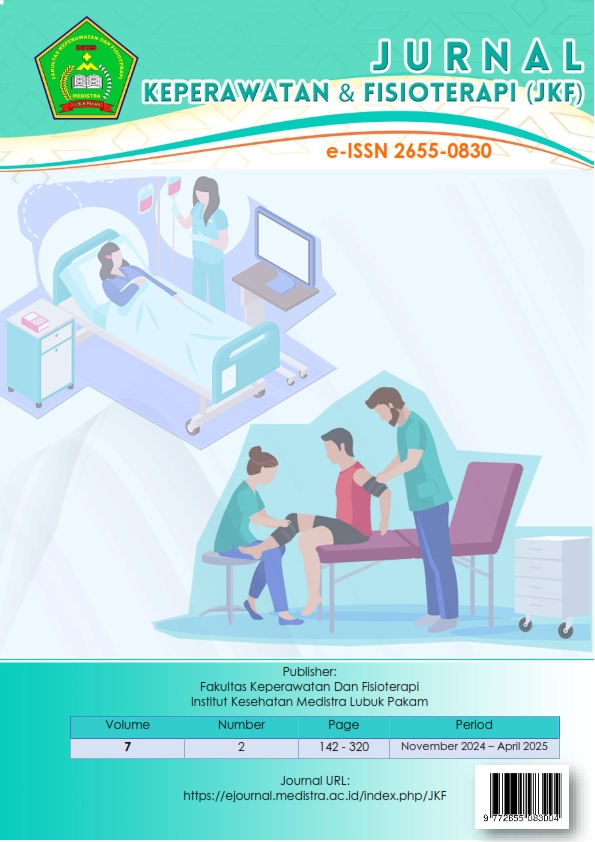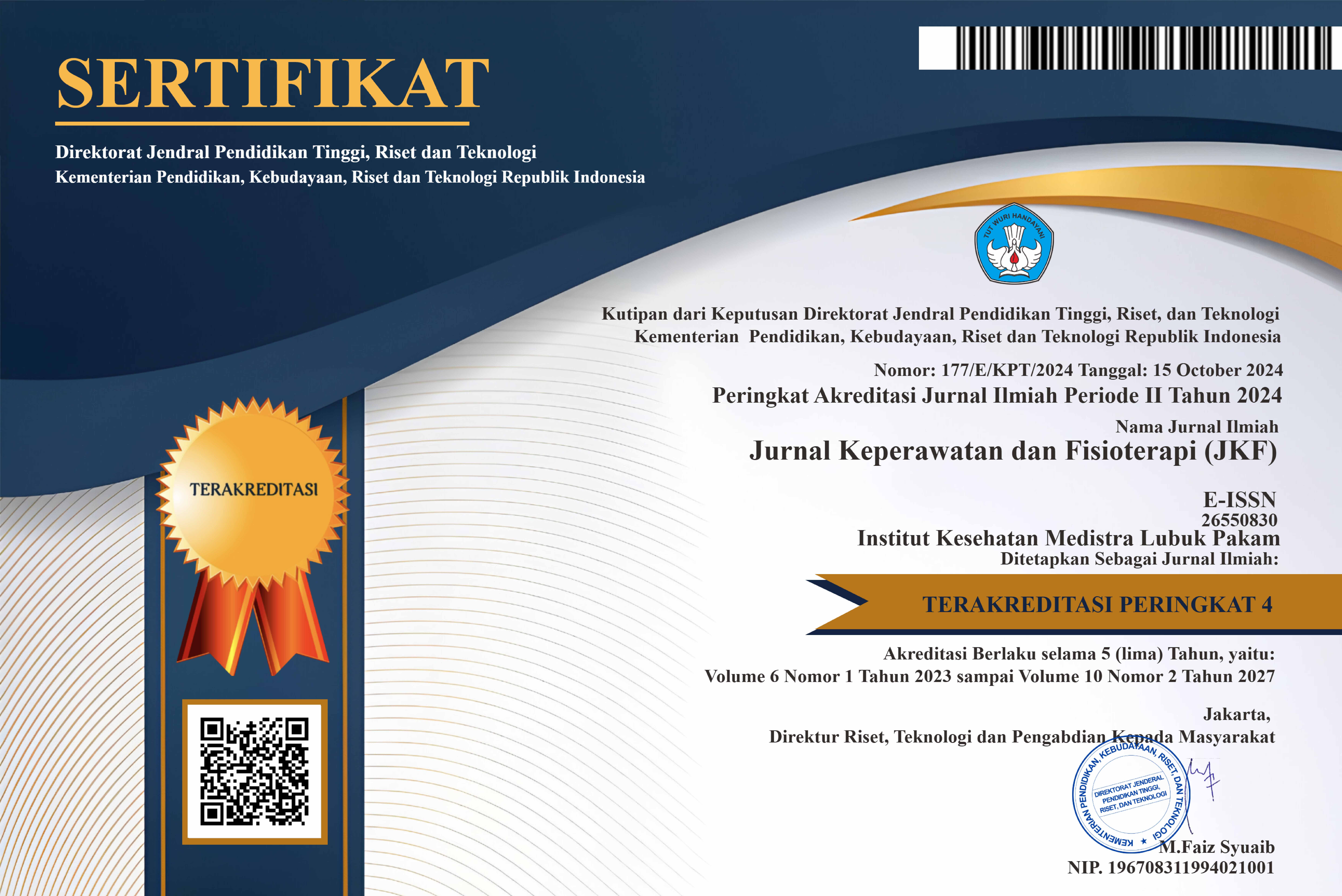The Effect Of Core Stability Exercise And Telephysiotherapy On The Walking Balance Of Post-Ischemic Stroke Patients
DOI:
https://doi.org/10.35451/jkf.v7i2.2674Keywords:
Stroke, Core Stability Exercise, Degree of Balance.Abstract
Stroke remains a major global health concern, ranking as the second leading cause of death and the third leading cause of disability worldwide. Among the common residual effects faced by stroke survivors is impaired walking balance. To address this issue, this study investigated the effectiveness of core stability exercises in improving walking balance, as measured by the Timed Up and Go (TUG) test. The study involved 12 participants aged between 40 and 70 years and adopted a case study approach. A quasi-experimental one-group pre-test and post-test design was used. The dependent variable was walking balance in post-ischemic stroke patients, while the independent variable was the implementation of core stability exercises delivered through tele-physiotherapy.Statistical analysis using the Shapiro-Wilk test revealed a significant improvement in walking balance after the intervention. The results showed a pre-intervention mean TUG score of 17.500 (SD = 5.351) and a post-intervention mean of 12.333 (SD = 3.228), with a significance value of 0.000 (df = 12). These findings indicate a statistically significant difference in performance before and after the intervention.
In conclusion, the null hypothesis (H?) is rejected and the alternative hypothesis (H?) is accepted, demonstrating that core stability exercises delivered via tele-physiotherapy significantly improve walking balance in post-ischemic stroke patients at Budhi Dharma Clinic, Kreshna Foundation.
Downloads
References
Feigin,L.V,dkk,2022 World Stroke Organization (WSO): Global Stroke Fact Sheet 2022.National Lybrary of Medicine,vol 17,Isue 1.Hal 1-2
Salman,I,P dkk.2022.Perbedaan Diagnosis Stroke Iskemik dan Stroke Hemoragik dengan Hasil Transcranial Doppler di RSUP Dr.M.Djamil Padang.Scientific Journal.Vol 1 no 5,hal 393
Herman.T, Giladi.N, Hausdorf.J.M, 2010.Properties of the Time Up and Go Test : More than Meets the eye.Clinical Section/Original Paper. DOI: 10.1159/000314963
Yasa & vitalistyawati (2023). Pengaruh Pemberian Kombinasi Core Stability Exercise dan Wobble Board Terhadap Keseimbangan Dinamis Pada Anak Sekolah Dasar. Jurnal Fisioterapi dan Rehabilitasi Vol. 7 No. 2 Juli 2023. Vol. 7 No. 2 Juli 2023. Hal. 227 – 232.
Vione,D.O,Sumakul,dkk.2023,Pengaruh Core Stability Exercise terhadap keseimbangan berjalan pasien pasca stroke di RSU Gunung Maria Tomohon.Jurnal Ilmu Pendidikan Nonformal. P-ISSN 2407-8018 E-ISSN 2721-7310.Vol 9. No 1. Hal 1-2
Wowiling, Sengkey, Lolombulan (2016). Pengaruh latihan core-strengtheningterhadap stabilitas trunkus dan keseimbangan pasien pasca stroke. Jurnal Biomedik (JBM),Volume 8, Nomor 1, Maret 2016, hlm. 43-50
Kurniawati,dkk.2021.Pengaruh Telefisioterapi terhadap kualitas hidup pasien stroke selama pandemic covid-19.Jurnal Ilmiah Fisioterapi.vol 21.no.1
Downloads
Published
Issue
Section
License
Copyright (c) 2025 Sabirin Berampu

This work is licensed under a Creative Commons Attribution 4.0 International License.
Copyright in each article is the property of the Author.


























